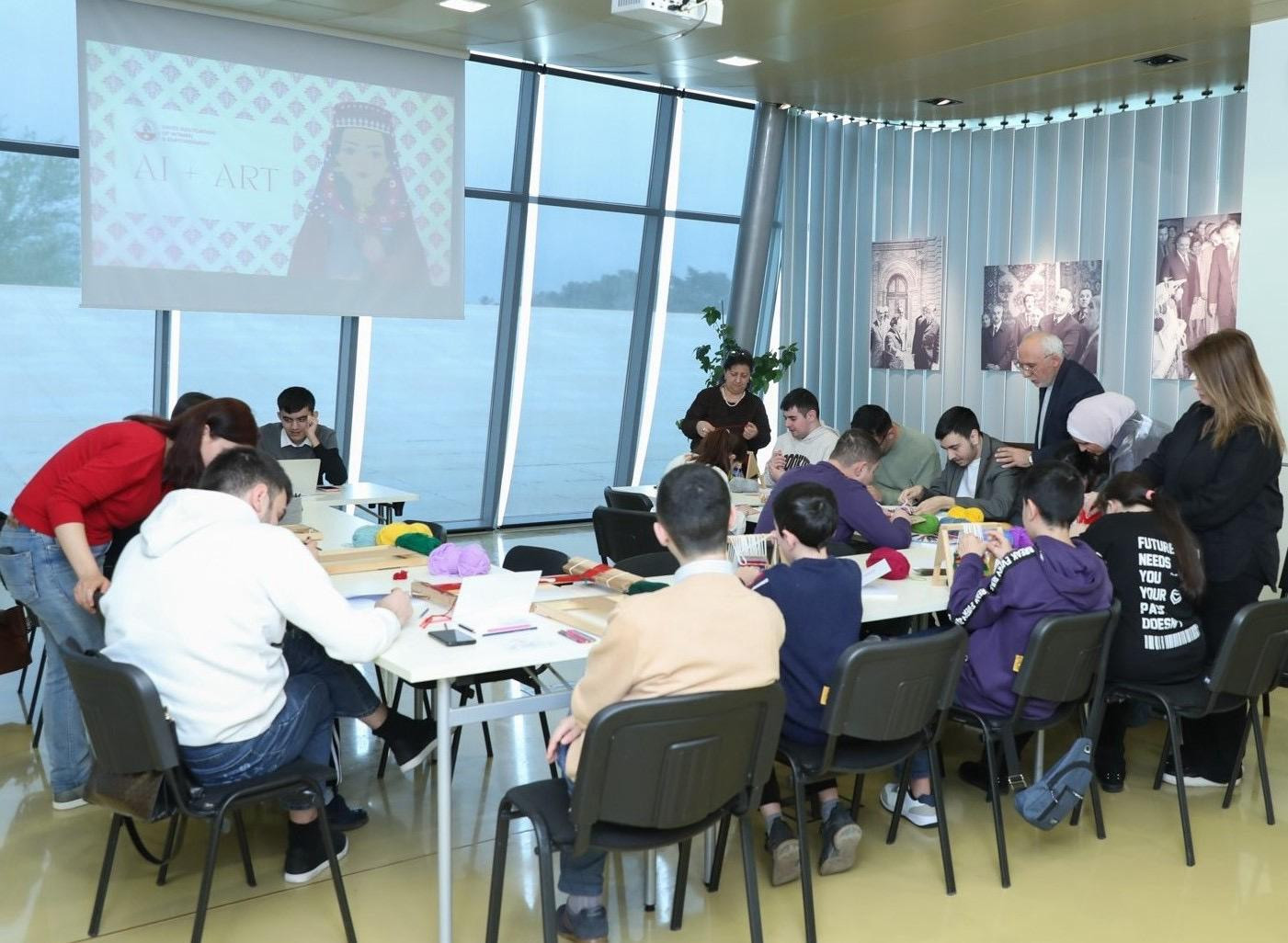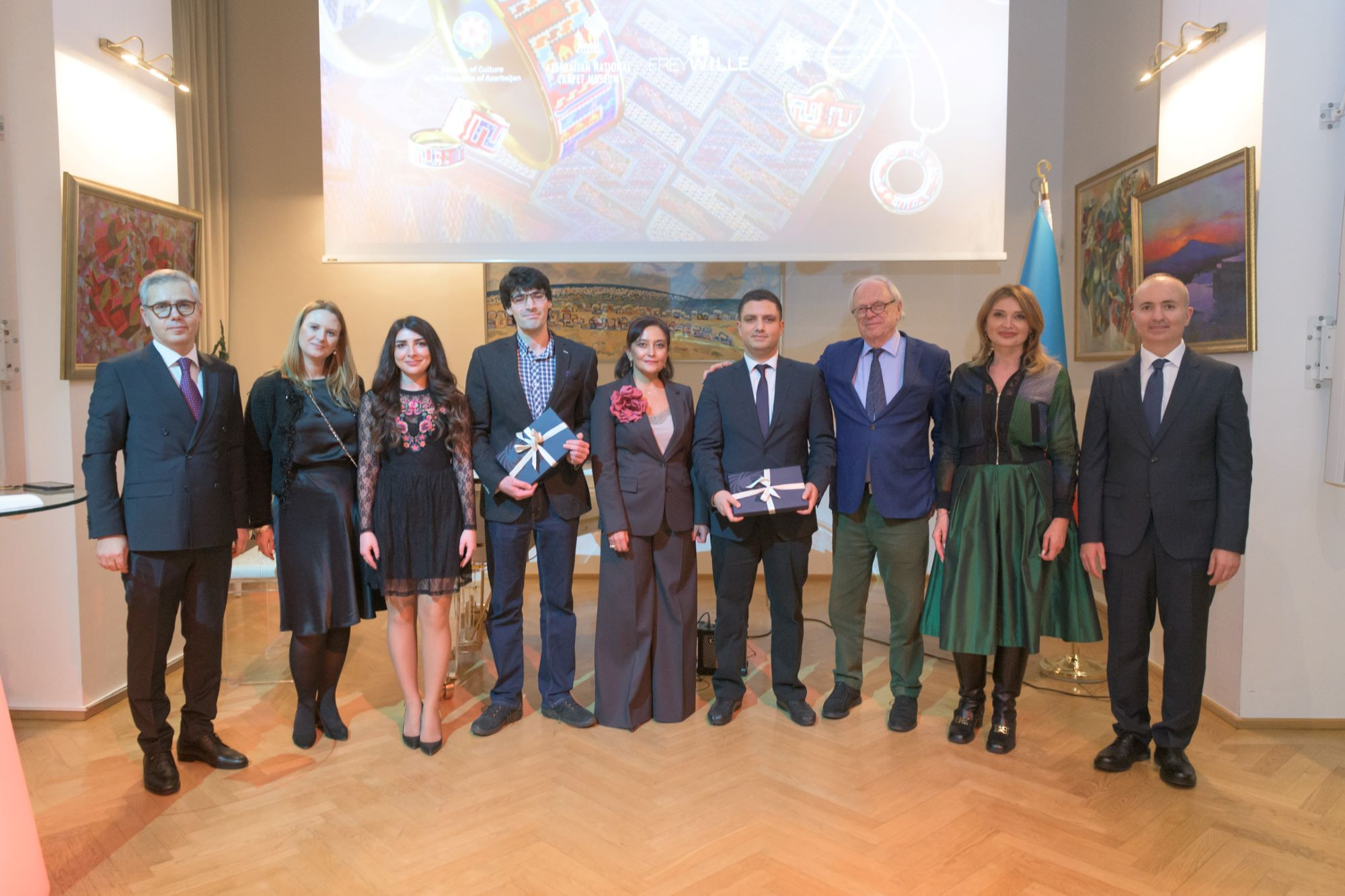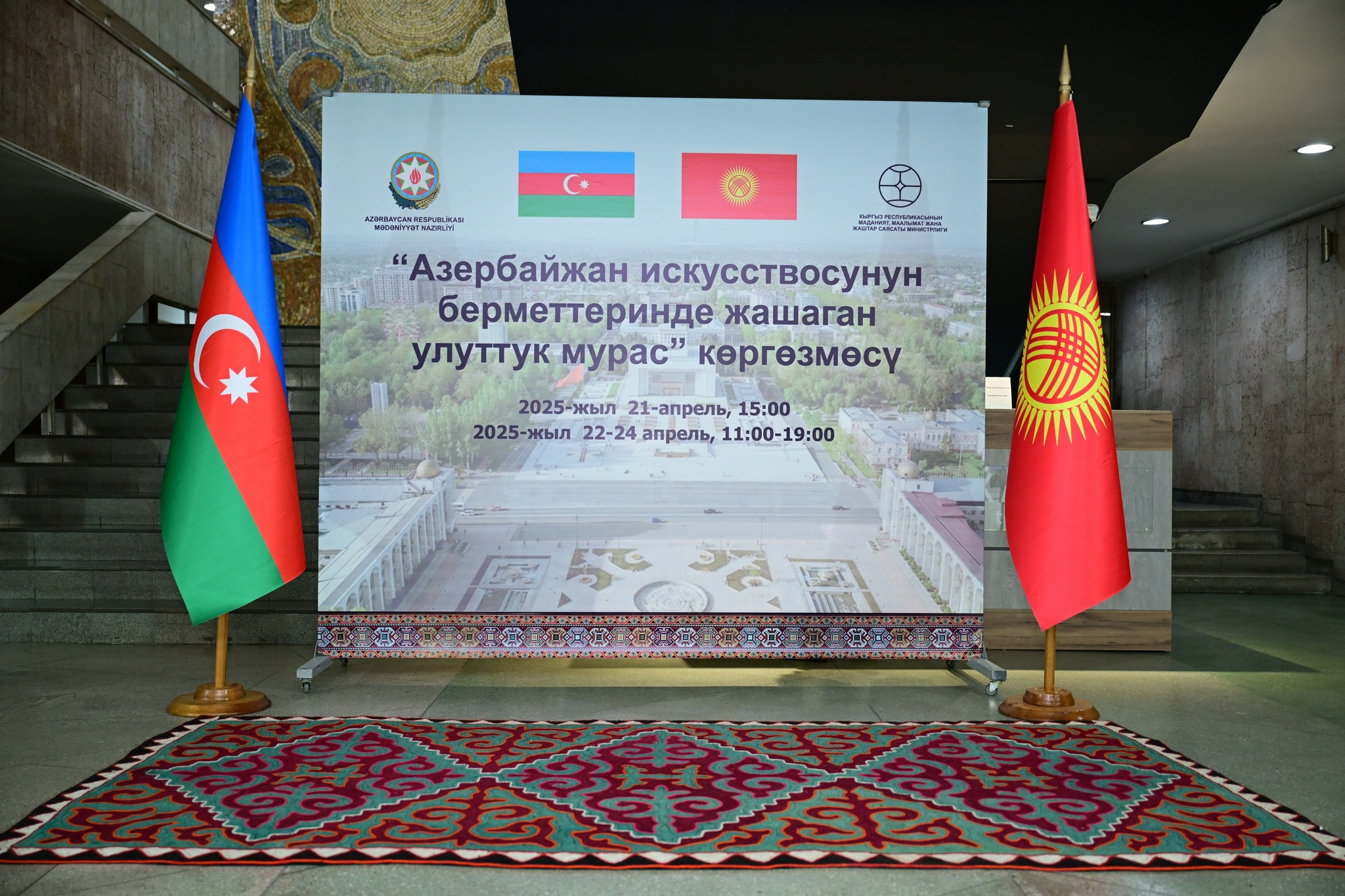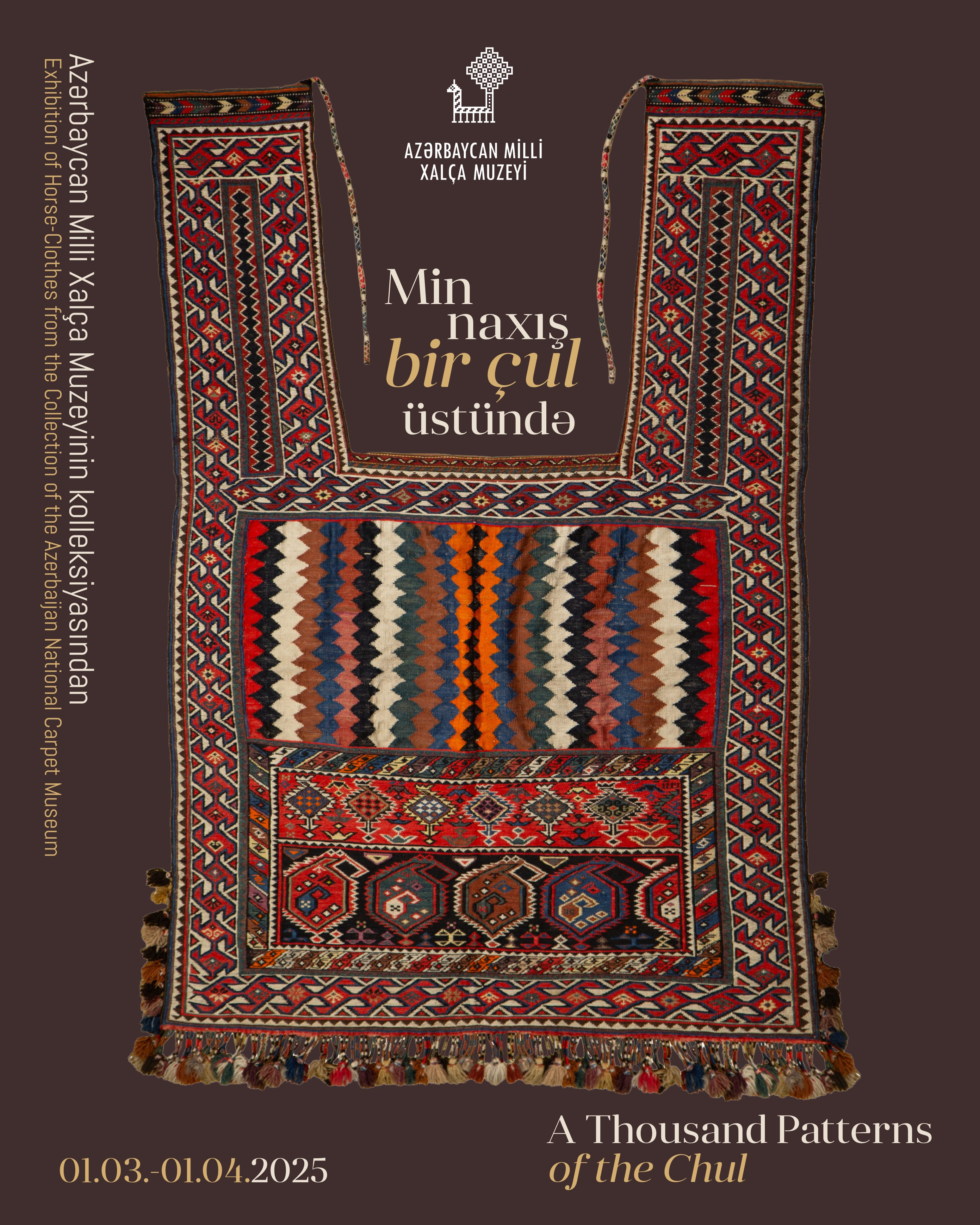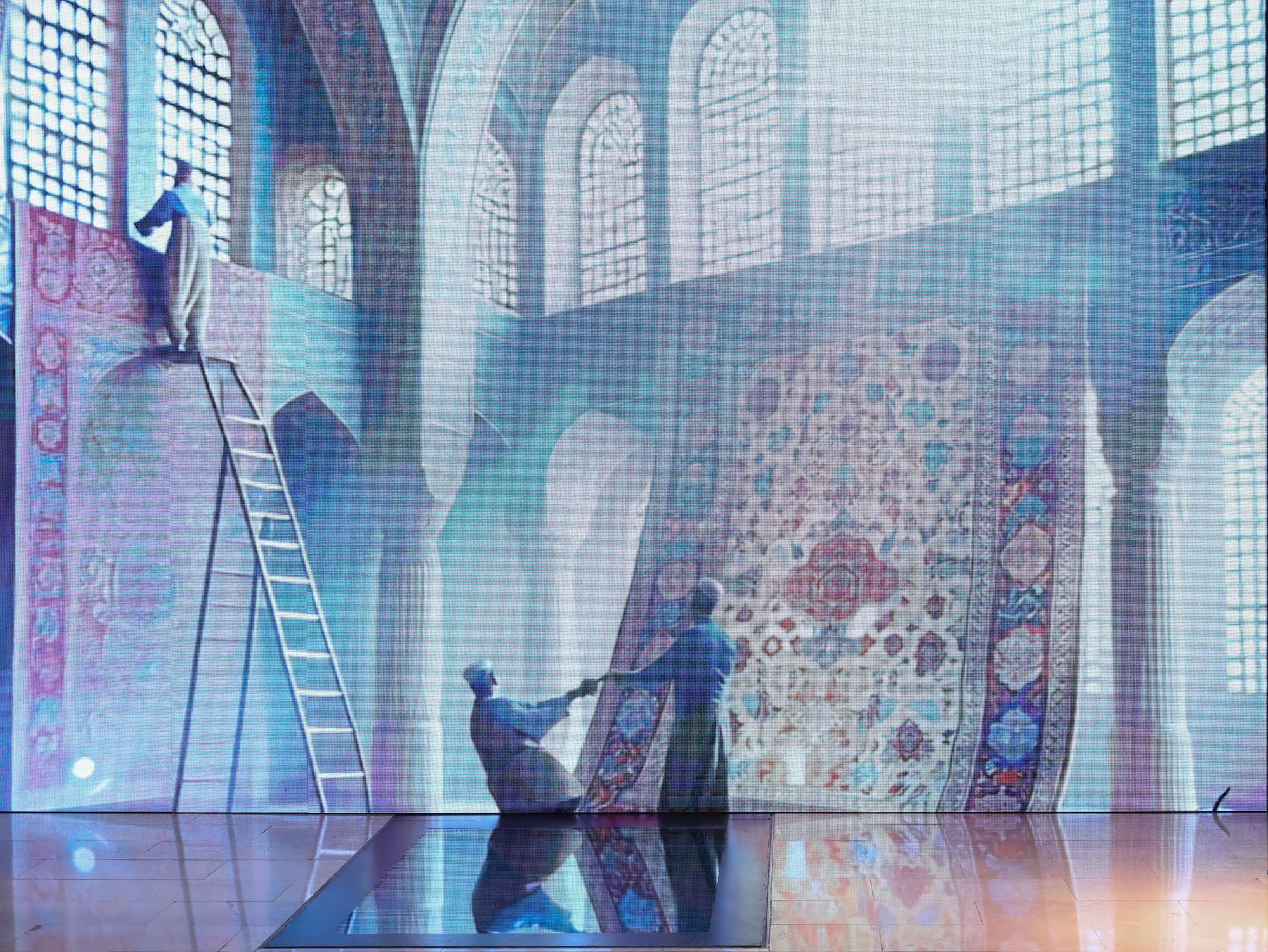Carpet Pirebedil
This Friday's first chosen exhibit is the late-19th-century Pirebedil carpet from the museum's Pile Carpets collection. Its historical, artistic, and scientific significance allows us to call it one of the best samples of the Guba carpet weaving center. Let's learn more about it!
Carpet Pirebedil. Guba, Azerbaijan. Late 19th century. Warp, pile – wool, weft – cotton. 142x213 cm. Inv. No. 445
Guba carpets are usually patterned with complex medallions arranged along the entire length of the carpet. Various motifs enrich the borders surrounding the main field, leaving very little space unfilled. Guba carpets being one of the best among the variety of Azerbaijani carpets, decorated with various geometric patterns and ornaments. There are also representations of animals and plants. The color scale of Guba carpets is rich. The main colors, as a rule, are blue and dark red. A variety of decoration is also
achieved by using yellow, green and natural shades of wool. One of the most famous designs is represented in a late-19th-century
Pirebedil carpet (Inv. No. 445) from the collection of the Azerbaijan National Carpet Museum. It was acquired by the museum in 1968. The carpet's name goes back to the same name village in Shabran. The carpet’s design is complicated: elements of various shapes are randomly scattered in the field. There are stylized plant motifs of grape leaves, with animal and bird figures placed near the highly geometric representations of horns characteristic of this design. The highly stylized motif of horns symbolizes vitality and is a totemic amulet.
